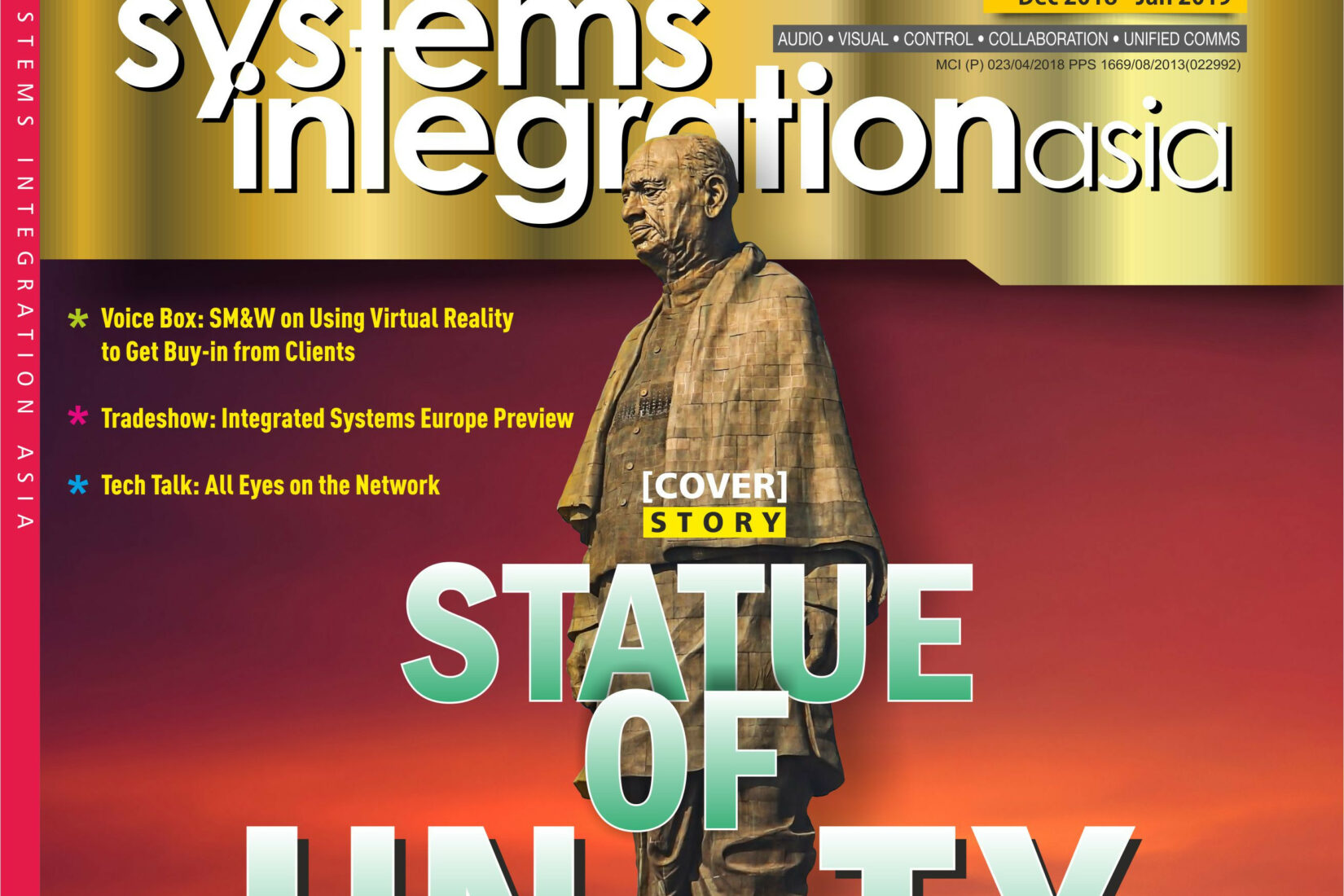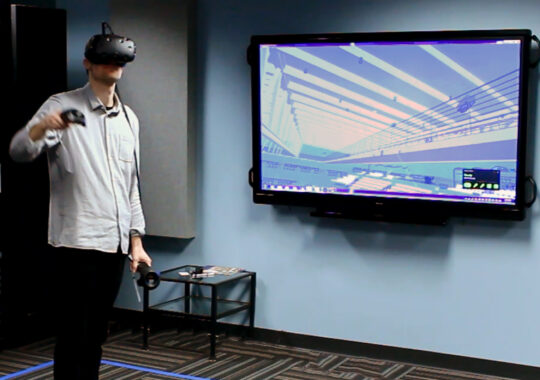Photo from Systems Integration Asia Magazine Vol. 18 Issue 2.
The SM&W offices in the USA took to using VR a couple of years back to get their clients involved in the design process. SI Asia had the privilege of having a brief chat with Mark L. Peterson, MBA, Associate Principal from SM&W’s New York office, during his recent visit to Singapore. We were curious as to how VR technology has helped SM&W. Mark shares with us the experience.
The fundamental change concerning VR was the adoption of Revit in the BIM model. Traditional AutoCAD was time-consuming and costly. There was only line in sight of one path, and 3D rendering took up a lot of time. When the industry started to adopt Revit in the BIM model, this process was sped up considerably. From taking a week, it now is possible for us to create a 3D walk-through model in less than a day.
The VR experience is only limited by design – you do not know the texture and tones. But we are looking at the structure. Once you immerse yourself in the model, the viewing width changes in VR – it is more realistic. We are of course talking about using VR in structural design and not for other types of content. SM&W uses VR depending on the complexity of the project – where we need the client to buy in or for us to see if there is a problem. It will not make sense for all projects. Let me give you a few examples. We created a VR experience for an Auditorium. The architect provided the model with HVAC requirement included. This enabled us to see a bird’s eye view of the auditorium. With a controller, we could position ourselves in whichever part of the auditorium to see sight lines and if there was any blockage. Basically, we had a 360-degree view of the auditorium, and we could check on placements of systems and if any of the seating positions had an issue seeing the stage.
Another example was for a Command Centre. We helped the client by analysing sight lines based on what the client planned to install. As you may well be aware, Command Centres have personnel sitting in rows with a personal monitor in front of them and at the front are the larger screens. With the VR, we could see if any of the personnel was being blocked from seeing the larger screen. We could advise them on the size of the larger screen and also the right height installation so that no one’s view is hindered.
What we are looking for, in this case, is for the client to buy in. How to resolve obstructions. We needed to get them to trust our design experience and get them engaged. The time for the client to spend money was short – they wanted comparison and options – the visualisation experience helped them with their decision. In another unique situation, we had a developer who had a mixed use project which consisted of a hotel and residential apartments. The sales office wanted to create an experience centre of a model apartment. As in most cases, developers will spend on high-end grade materials and fittings for the showcase room as they want to ensure that their clients can visualise themselves living in the apartment. In this instance, SM&W shared with the owner a preview of the model room. This enabled the developer to experience the walk-through, as in the physical structure from the entrance to the end of the space. The VR experience highlighted to them a dimensional problem which they immediately rectified. This would not have been possible if they were seeing the drawings on paper. By getting the developer involved,it helped them to be focused on potential issues.
Challenges with VR
Resolution is the biggest problem. People expect higher quality content. Customer expectation for experience is further ahead than available technology at the moment. VR does not offer enough
resolution to the point of offering ‘suspension of belief’ – we need to get to the stage where the images look real. Content is also critical. In our case, we need to engage our clients with content. “What is the content and what technology is needed – content is crucial as it associates with the brand, image and emotion and display is secondary.“ VR is also more of an individual experience, but many clients want group experience . So we need to surround the audience with images and give them the ability to position themselves wherever they want.
Going Forward
For SM&W, our relationship with architects is getting better. We now partner them earlier in the process – so that the client buys in our service and that of the architect. We are no longer a downstream service provider.
As consultants, we need to move on as solutions become a commodity. We want the clients to get engaged earlier. We would like to start the process early – help them understand what innovations mean to them – this will help facilitate discussions and where crucial technologies like VR helps us get the buy-in from the clients. It enables them to see what we see and even suggest to us ideas or at the very least talk to us about issues. This is critical for the success of any project.
This article was published in Systems Integration Asia Magazine.


